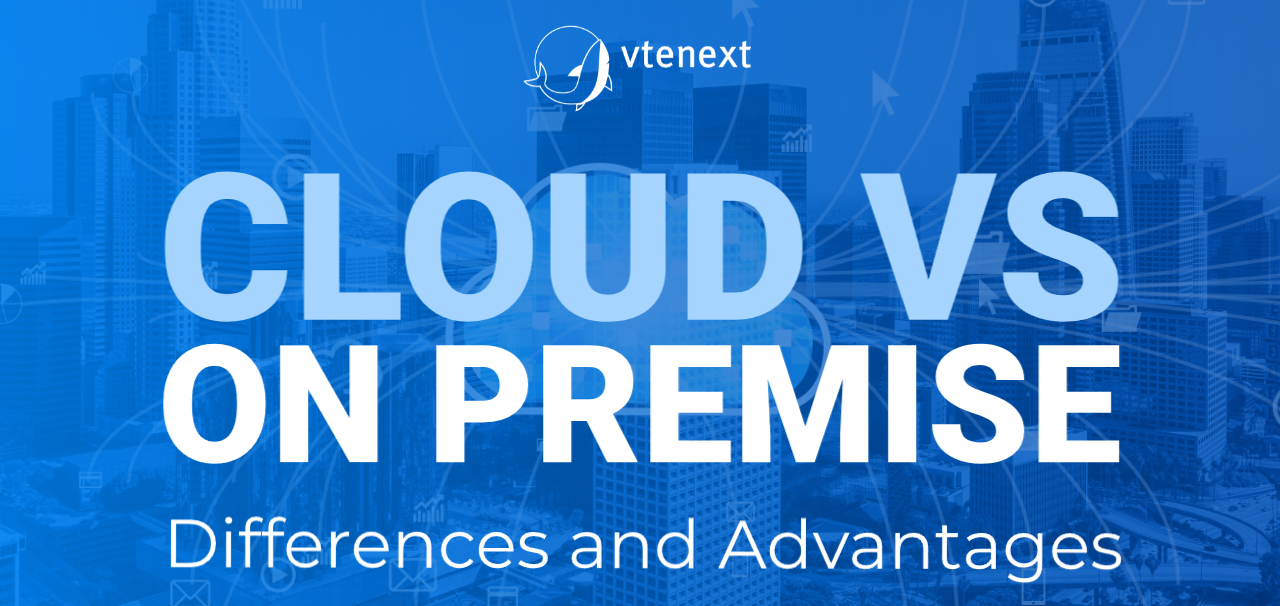How a business manages data, resources, and processes depends directly on the choice between cloud and on premise. Each model brings with it specific benefits: the cloud focuses on flexibility and scalability, while the on premise model ensures greater control and customization. Speed of response, security, and economic sustainability have now become decisive criteria for IT infrastructure, and companies are called upon to choose the option best suited to their needs in the most appropriate way.
What does On Premise mean?
In many business contexts, especially where direct control over data and systems is considered an indispensable requirement, on-premise infrastructures represent a well-established solution that continues to be relevant. This model involves hardware, software, and all IT components being installed and managed in-house, within the physical location of the organization. It is a choice that requires substantial initial investments but guarantees full autonomy in management, application customization, and the definition of security policies.
In areas such as finance, healthcare, or public administration, where the confidentiality of information is a priority, on-premise infrastructure allows for a more direct response to regulatory constraints. However, autonomy comes at a price: keeping systems up to date, managing critical issues, and bearing maintenance costs require qualified internal resources and an organization capable of dealing with ever-changing technological complexity.
Despite its limitations, the on-premise environment continues to represent a valid choice for organizations that prioritize stability, data protection, and integration with legacy systems.
What does the Cloud mean?
Cloud computing has redefined the concept of IT infrastructure, transforming access to technological resources into a flexible, scalable, and always-available service. There are no longer physical servers to install and maintain, but virtual environments managed by specialized providers, ready to grow alongside the company’s needs. This model allows enterprises to quickly activate new tools, reduce fixed costs, and lighten the burden on internal IT teams.
What changes is the operational paradigm: technology becomes a modular extension of the business, capable of adapting in real time to demand peaks or entry into new markets. The logic “pay-per-use” makes costs predictable and proportionate to actual usage, paving the way for even smaller or expanding organizations.
The cloud offers storage and computing power: it enables faster application releases, facilitates system integration, and improves data accessibility from anywhere.
Direct comparison between the two options
Thus, the two systems are based on opposing philosophies of IT infrastructure management. On the one hand, the traditional approach emphasizes the physical centrality of data and technical autonomy; on the other, the cloud shifts the logic to distributed platforms, outsourcing resources and simplifying scalability.
Differences are evident primarily in the mode of deployment: while on premise requires the purchase and installation of local servers, the cloud relies on remote data centers operated by third-party providers. This also leads to a substantial difference in costs: local infrastructure involves high upfront investments and fixed expenses for maintenance and upgrades, while the cloud model enables pay-as-you-go management, with dynamic rates and fewer operational constraints.
In terms of control, on premise ensures complete management of systems, data, and security. An essential feature for companies subject to stringent regulations. The cloud, by contrast, involves partial reliance on external providers: management is leaner, but data resides on shared servers, with governance and compliance implications.
Scalability and speed of deployment also highlight a significant difference. In the cloud, new resources can be activated immediately, while an on-premise environment requires more time for technical implementation. However, customization and integration with legacy software are often easier in local environments.
When to choose one or the other
There is no infrastructure solution suitable for every organization. Choices vary depending on factors such as the industry, level of digitalization, security policies, and investment capacity. The cloud emerges as the preferred choice in contexts where flexibility, speed, and remote access are essential.
Growing startups, companies operating across multiple locations, and organizations focused on continuous innovation find in this model a tool for evolving without rigid structural constraints. The ability to scale dynamically, activating new resources in a few minutes, translates into an immediate competitive advantage.
In contrast, enterprises operating in regulated sectors or handling sensitive information still tend to favour the on premise approach. In such cases, total control over the infrastructure and the physical location of the data remain key requirements. Companies with complex legacy systems also often prefer to maintain local environments to ensure business continuity and consistency in internal processes.
Between the clear-cut choice of a single approach and the rigidity of exclusive models, a third option has emerged: the hybrid model. Hybrid architectures integrate cloud and on-premise components into a single coordinated ecosystem, allowing organizations to leverage the benefits of both. This is an increasingly popular approach, where data and applications are distributed according to their criticality, frequency of use and security requirements.
This type of configuration requires advanced governance but offers a higher degree of flexibility. The most sensitive information can remain on corporate servers, while less critical data can be moved to the cloud to ensure accessibility and interoperability. The goal is to build an agile infrastructure capable of adapting to changing scenarios without sacrificing security or stability.
What about CRMs?
Cloud infrastructures also form the foundation of the systems companies use to manage relationships with customers and leads, transforming software from local installations into services accessible from anywhere. Cloud CRM solutions like vtenext offer comprehensive functionality – marketing, sales, after-sales, ticket management, shared calendars, internal chat – without the need for internal infrastructure. Business processes are automated with integrated BPMN engines, enabling the design of custom workflows, the sending of reminders, and the automation of follow-ups. The cloud architecture ensures rapid deployment, low costs and seamless updates, while the open source model facilitates integration with external tools via APIs.

